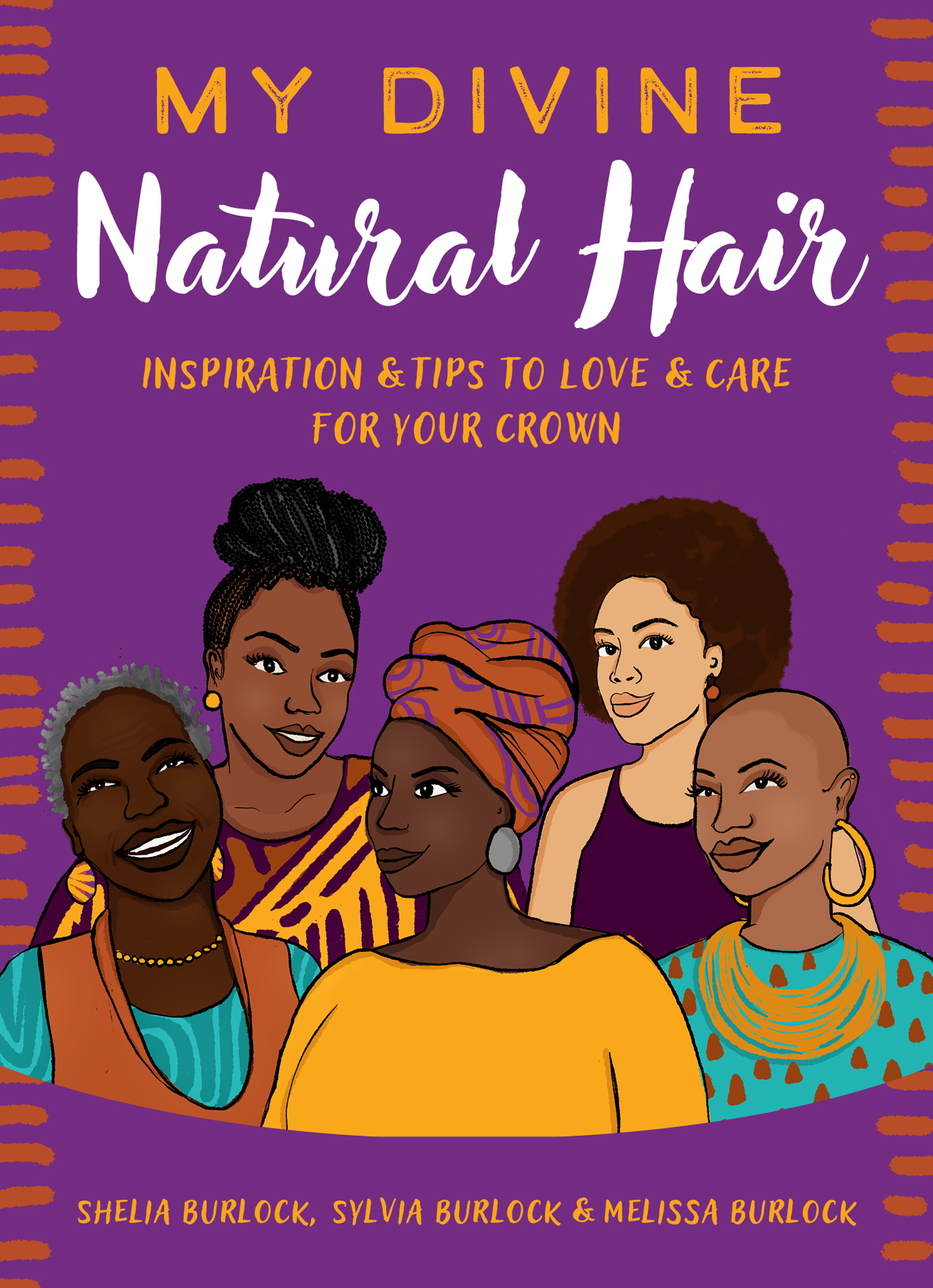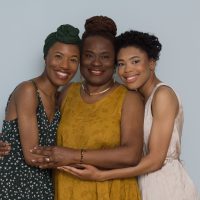
~
Spiritual & Historical Roots: A Reflection On African Descent Hair in the U.S.
In an interview promoting Hulu’s docuseries “The Hair Tales,” Tracee Ellis Ross said, “I believe that hair is like a portal into our souls…Hair care is self-care…It connects us to our legacy, it connects us to our history, it connects us to our community, and our family, and our own personal stories.” Hair, like every other part of our body, is sacred. Our Afro-textured hair is more than just a physical feature; it has something to say about our history. Our natural hair journeys mean going back to hairstyles our ancestors wore centuries ago, like expertly braided cornrows. And in the spirit of Sankofa, an Akan word that literally translates to “it is not taboo to fetch what is at risk of being left behind,” we return to our roots to get what is in danger of being left behind in order to mend our present and manifest our future.
As the highest point of a person’s body, hair was thought to be a conduit for spiritual communication in precolonial West African societies. Certain orishas, or intermediary gods and goddesses in Yoruba mythology, were described as skilled hairdressers; their worshippers appropriately wore specific braided hairstyles.¹ The idea that hair growth and spiritual symbolism are entwined isn’t unique to African belief systems. Sikh men and women keep their hair long to follow principles that are part of their religion. In Indigenous American cultures, long hair is linked to both a person’s spiritual energy and her cultural identity.²
Such beliefs have Biblical histories also. One of the most intimate acts of worship in the Ancient Near East was the taking of the Nazarite vow (Numbers 6:1–21) to abstain from cutting one’s hair for a specific number of days, after which the Nazirite would—in a holy “big chop”—shave his or her head and subsequently burn the hair as an offering. From being symbolized as a supernaturally sensitive antenna in some cultures to serving as a dedicated sacrifice in others, hair is, and has always been, more than just hair. Hairstyles said a lot about the identity of those who wore them in fifteenth-century African societies. Within the kingdoms of the Yoruba, Wolof, Mandingo, and Mende, hairstyles were a complex, unspoken language that communicated one’s social standing, marital status, religious affiliation, ethnic group, wealth, surname or clan identity, and age.³ The art of interweaving your identity into your hair is still a contemporary African practice. For a woman from the Himba tribe in northwestern Namibia, the hairstyle she wears as a young girl is different from the one she wears when she’s ready to be courted, which is different from the one she wears as a married woman, which is different from the one she wears as a married woman with kids.4 Hairstyles always change with the stages of a woman’s life.
The Blessing of InHAIRitance: Ancient Hairstyles of Today
One afternoon, my sister Melissa and I visited a local art museum. After a refreshing walk by the museum gardens and a gurgling fountain, we went to tour the art exhibits inside. Although we toured several different floors, there was one piece in the African art galleries that garnered our attention. Once we had viewed wooden figures and masks and chit-chatted about the textiles and ceramics, we both noticed a glass case in the middle of the exhibit. The description read: “Mbukushu people. Botswana or Namibia. Woman’s headdress. In the past Mbukushu women wore beautiful wigs that were fixed into their hair with braids. For years, mothers would prepare young girls to wear the heavy headdresses by oiling their hair and braiding it with beads & other accessories.” The first thing I thought was: Wait! So, we wore wigs in Africa?! Apparently yes…and beautiful, traditional wigs at that. But instead of being called “wigs” or “hair pieces,” they were known as headdresses. A little further research led me to learn that different African tribal groups have their own unique headdresses special to them. Depending on the tribal group, the headdress can be symbolic of a young female transitioning into puberty, marriage, or motherhood. For example, Himba women wear Ehando wigs, Ovahimba wigs, and Ekori bonnets or crowns at different stages in their lives. My sister and I were amazed by this discovery. Perhaps, weaves, wigs, and hair pieces connect African Americans today with the customs of our ancestors. Maybe we can glean something else from this information as well both about ourselves and our hair. Our hair is not only something to celebrate, embrace, and nurture but it also holds ancestral significance that shines the spotlight on customs and traditions.
The Burden of Legacy: Four Hundred Years of Hair Trauma
Black people using innumerable products to stretch, enhance, or alter the texture of our hair is rooted in a history of lack. Enslaved African men and women, robbed of the tools and oils they used to craft elaborate, complex hairstyles in their own societies resorted to using Western oil-based substitutes such as butter, bacon fat, goose grease, and even axle grease. Black women mixed lye and potatoes together to create a caustic hair-straightening concoction.5 Four hundred years later, researchers have only begun to make the connections between the use of chemical hair straighteners and uterine cancer, which, though a rare form of cancer, appears at higher rates among black women than women of other ethnicities.6 Moreover, contemporary hair care products for Afro-textured hair use the supposed deficiency of natural hair as a promotional tactic, masking the wolf of denigration in the sheep’s clothing of guarantees to make Afro hair more defined, shinier, manageable, or “tame.” Because of such product promises, black women are lured into spending millions upon millions of dollars on beauty products.7
In addition to social conditioning, we face pressure to change our hair to appear more professional, or in other words, acceptable to majority-white society. Whether in school, a 9-to-5 job, or the White House, black women and men are discriminated against for wearing traditional natural hairstyles. The CROWN Act (Creating a Respectful and Open World for Natural Hair) is a law—still not passed by Congress at the date of this book’s publication—that specifically redresses this form of racism by prohibiting discrimination based on hair texture or hairstyles. Because the legacy of hair trauma that began during enslavement continues today, black women and our natural hair have endured the trauma of chemical straighteners, damaging hair products, and societal discrimination for centuries. How we wear our hair matters (to the women around us).
Sometimes I (Sylvia) wonder if this natural hair journey is worth it. Face it. Depending on where you live, you might have the problem of limited stylists or overpriced styling tools—or maybe it’s neither of those things. Maybe it’s just you are a solo act. You are the only one wearing your hair like this, and in the mirror, you have to affirm yourself daily that, yes, kinky roots really are beautiful after all and, no, you don’t need a weave. When I find my hands itching to add in crochet curls or clipins and it’s not just for a protective style, I have to ask myself, “Am I hiding?” “Am I changing and shaping my hair to fit society’s expectations or am I fearlessly being me?”
Wearing your own hair can inspire others. Like that one time I showed up after Labor Day break at work, rockin’ an Afro puff, and wouldn’t you know, another black coworker was rockin’ one too. Or like when you see a gorgeous Afro up close in real life, and you smile, cheering and celebrating the beauty of differences. Those moments are memorable to me. I think something we have been taught and learned is that we must hide our different hair textures. That “kinky” is just something that needs to be straightened and curls were made for a flat iron, hissing heat. But these are lies we tell ourselves in order to climb into the box created by others that dictates what is considered beautiful.
I remember getting my hair flat ironed. Was it an operation! My strong kinks would not yield to the hot comb or flat iron. It took multiple passes to get my hair to hang straight which was damaging to my hair. In addition to the flat iron, I can still see the faces of the boys in my science class who turned and looked at me because I showed up with straight hair. But what about the times I wore braids or twists? I was equally beautiful then. But I was blinded by what the magazine covers and TV shows sold as beautiful, and that meant straight hair was the fairest of them all. Today, when I see another woman with natural hair, I beam with enthusiasm and I feel uplifted and affirmed with a sense of pride. It’s validating to wear my hair just as it is. Even if I don’t have a lot of hair or even if it’s not perfect, simply expressing my uniqueness is enough. It makes a statement. When I see another woman with natural hair or a scarf, it is like seeing a beautiful reflection of myself. We inadvertently say: this is our space and we can be ourselves here. One woman influences another.
Ways to Uplift Other Natural Hair Women
>> Be kind. Encourage one another. Compliments stay with you, so give them freely. It doesn’t cost you anything. If you see a style or look you like, say it.
>> Be sensitive. Be ready to listen to how another woman feels about her hair before talking about yourself. Being a good listener shows empathy, and who knows: as you trade stories, you may have shared experiences!
>> Be open. Be willing to offer tips, realizing that everyone’s hair is different. Share books (like this one) or even schedule regular hair checks or updates to track your progress. Everyone needs a little community and encouragement in their life about their hair.
Footnotes
- Among Yoruba people and Yoruba spiritualty, hairstyles have great meaning: Ayana Byrd and Lori Tharps, Hair Story: Untangling the Roots of Black Hair in America (St. Martin’s Griffin, 2014), 4.
- Long hair is linked to spiritual energy and cultural identity: “Women From Three Faith Communities Share How Their Long Hair and Spirituality Are Connected,” Allure, May 17, 2018, https://www.allure.com/story/long-hair-and-religious-spiritualityconnection.
- Hairstyles communicated aspects of a person’s identity in various kingdoms: Byrd and Tharps, Hair Story, 2.
- Hairstyles change with the stages of a woman’s life: Oreoritse Tariemi, “Otjize: The Red Beauty Miracle of The Himba People,” Guardian Life, January 27, 2022, https://guardian.ng/life/ otjize-the-red-beauty-miracle-of-the-himba-people/.
- Enslaved black women mixed household ingredients together to style their natural hair or meet Eurocentric beauty standards: Byrd and Tharps, Hair Story, 17.
- Uterine cancer affects black women more than women of other races: Che-Jung Chang, Katie M. O’Brien, Alexander P. Keil, Symielle A. Gaston, Chandra L. Jackson, Dale P. Sandler, and Alexandra J. White, “Use of Straighteners and Other Hair Products and Incident Uterine Cancer,” JNCI: Journal of the National Cancer Institute 114, 12 (December 2022): 1636–1645, https:// doi.org/10.1093/jnci/djac165; Becky Sullivan, “Hair Straightening Chemicals May Increase Women’s Risk of Uterine Cancer, Study Finds,” NPR, October 19, 2022, https://www.npr. org/2022/10/19/1129764003/hair-straightening-chemicalsmay-increase-womens-risk-of-uterine-cancer-study-fi.
- Black women spend millions on hair care: Nelly Ghansah, “The Afro Tax: African American Women Spend Four Times More on Hair Care Than Caucasian Women,” The AFRO, April 11, 2023, https://afro.com/the-afro-tax-african-american-women-spendfour-times-more-on-hair-care-than-caucasian-women/.
{Reprinted with permission from My Divine Natural Hair by Shelia, Sylvia, and Melissa Burlock copyright © 2024 Broadleaf Books.}
~
{Please consider Boosting our authors’ articles in their first week to help them win Elephant’s Ecosystem so they can get paid and write more}











Read 0 comments and reply